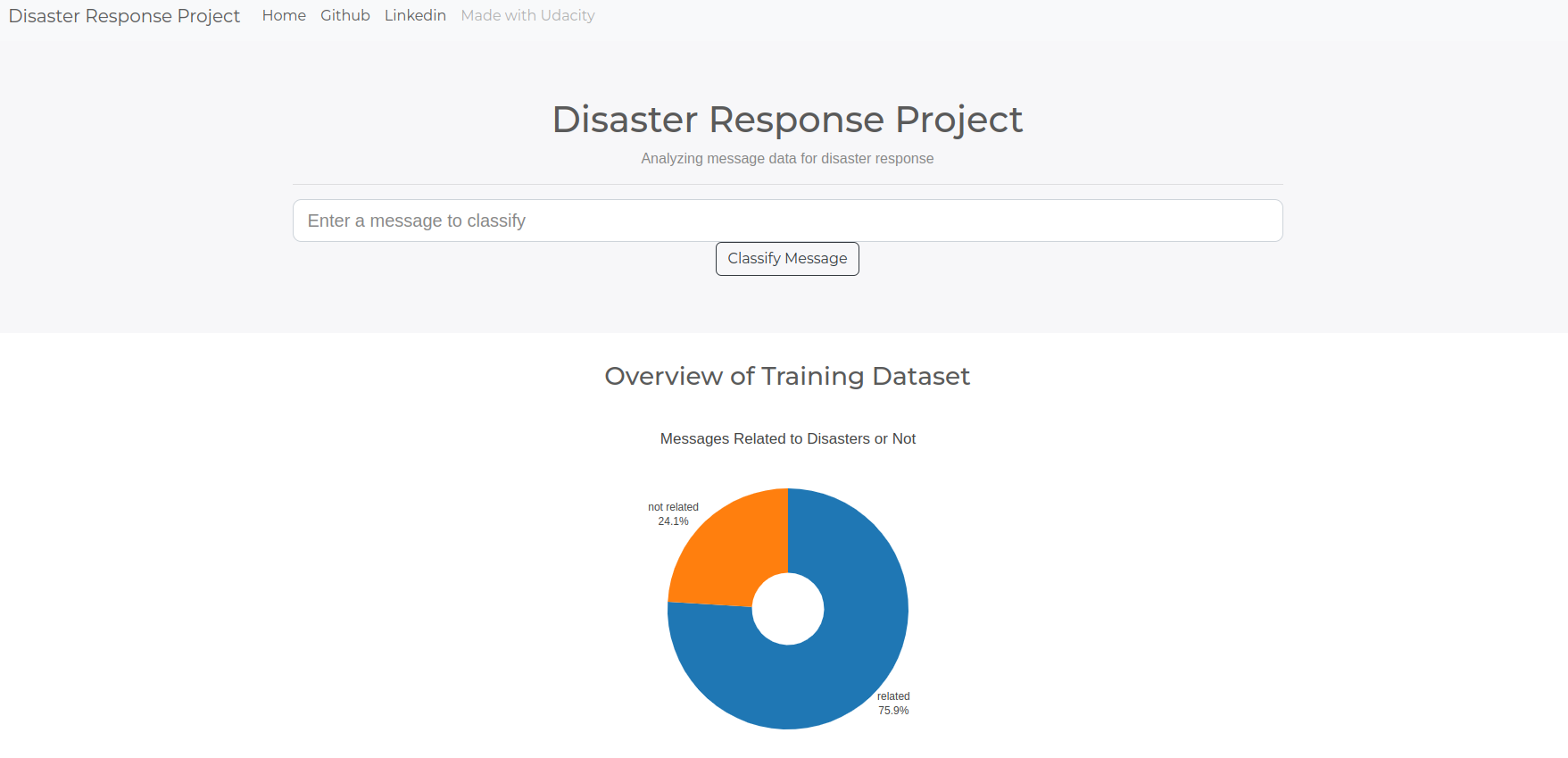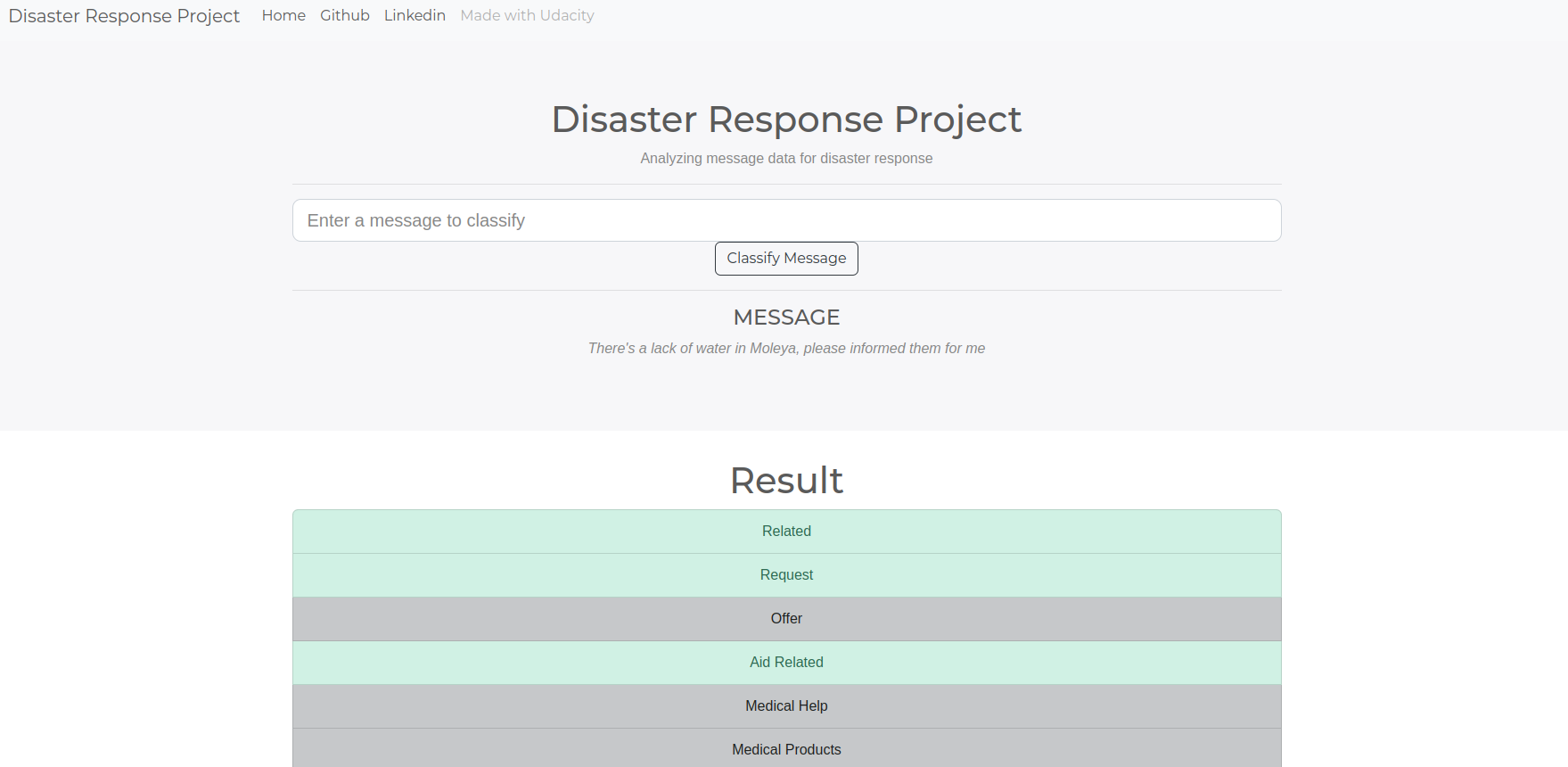This project was developed together with Udacity and Figure Eight to address a problem related to classifying messages in an event of a disaster context. It is complicated to know to which organization to communicate each type of emergency, and this difficulty can delay the assistance and rescue of those in need. The flooding of messages on social media or even in contact channels requires the work of identifying the main subject of each case and communicating with the appropriate organization. Thus, this project has the purpose of helping categorize messages in the way of indicating the main topic related to each message and then making it easier to identify which organization must take the lead in a specific case.
The project consists of a Flask app using an NLP machine learning pipeline to classify emergency messages.
It is composed of three stages:
- Data cleaning pipeline: it takes disaster messages' historical data, cleans it, and saves it in a database.
- NLP pipeline: reads the historical data from the database, trains an NLP model, and saves.
- Flask app: an interface where users can see historical data statistics and classify their messages.
Repository structure:
- _readme
- interface_go.png
- interface_home.png
- app
- templates
- go.html
- master.html
- run.py
- templates
- data
- disaster_categories.csv
- disaster_messages.csv
- process_data.py
- models
- train_classifier.py
- .gitignore
- README.md
- requirements.txt
The _readme folder contains the images used in the README.md file.
The app folder contains the files related to the Flask app inside the templates folder and the file run.py which is responsible to execute the app.
The data folder contains the .csv files containing the data used to train and evaluate the model and the file process_data.py which is responsible to process the data and store it in a database.
The models folder contains the file train_classifier.py which is responsible to train and evaluate the model and store it in a pickle file.
The repository also contains the files: .gitignore which establishes which files and directories must be ignored by Git; README.md which brings these instructions; and requirements.txt which has the required libraries to reproduce this project.
Follow the guidelines below to run the app:
-
It's recommended to start a virtual environment.
-
Clone this repository:
git clone git@github.com:TamirisCrepalde/disaster-response-pipeline.git. -
Install the required libraries by running the command:
pip install -r requirements.txt. -
Run the ETL pipeline that cleans the data and stores it on a database:
python data/process_data.py data/disaster_messages.csv data/disaster_categories.csv data/DisasterResponse.db -
Run the ML pipeline that trains the classifier and saves the model:
python models/train_classifier.py data/DisasterResponse.db models/classifier.pkl. -
Go to
appdirectory:cd app. -
Run the Flask app:
python run.py. -
Click the
PREVIEWbutton to open the homepage.
The home page of the Flask app has the following design:
After entering the message and clicking on the classifying button, the results are shown on the following page:
This project was developed as part of the Udacity Data Scientist Nanodegree. The data used in the model training was provided by Figure Eight.

